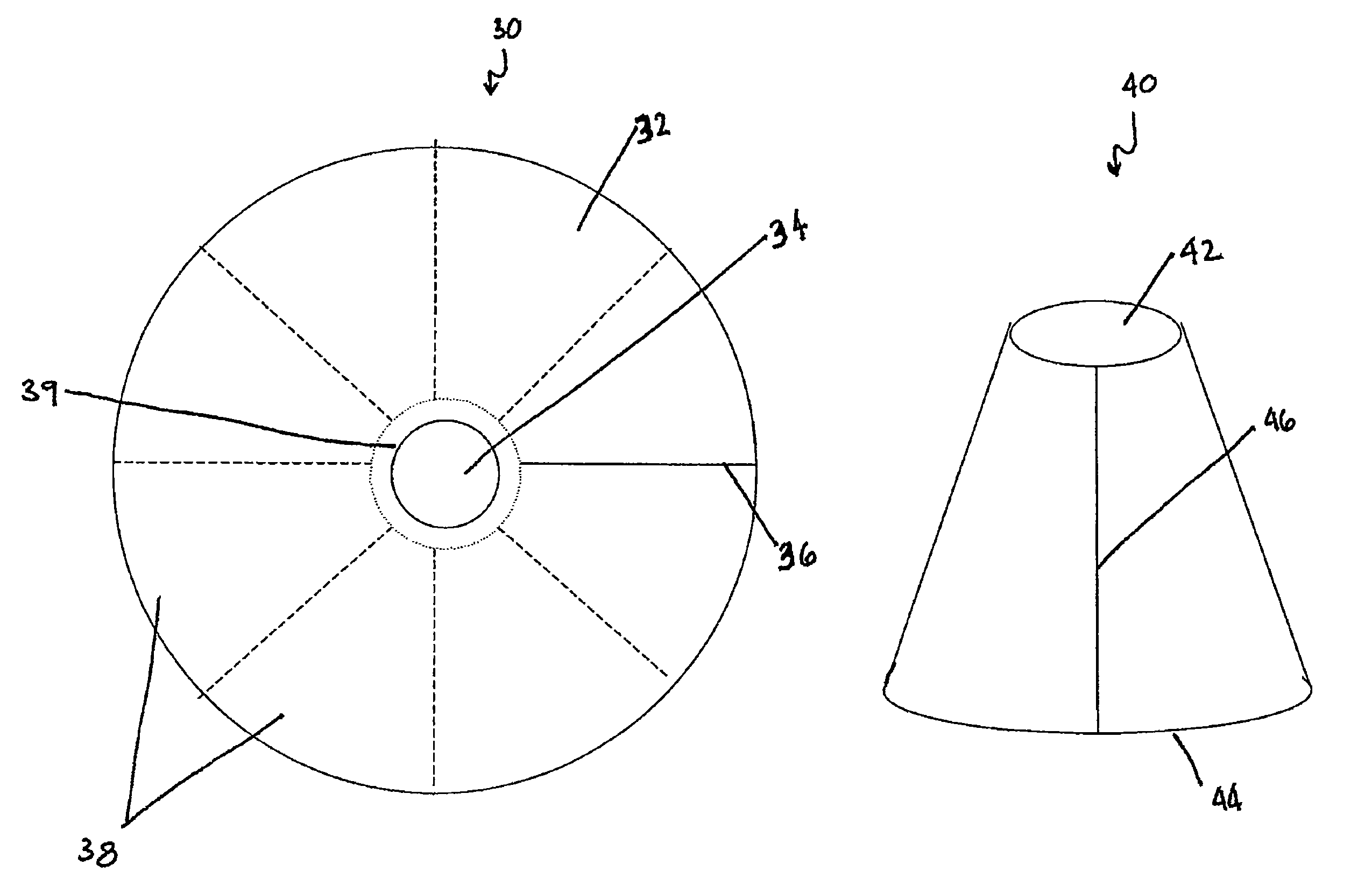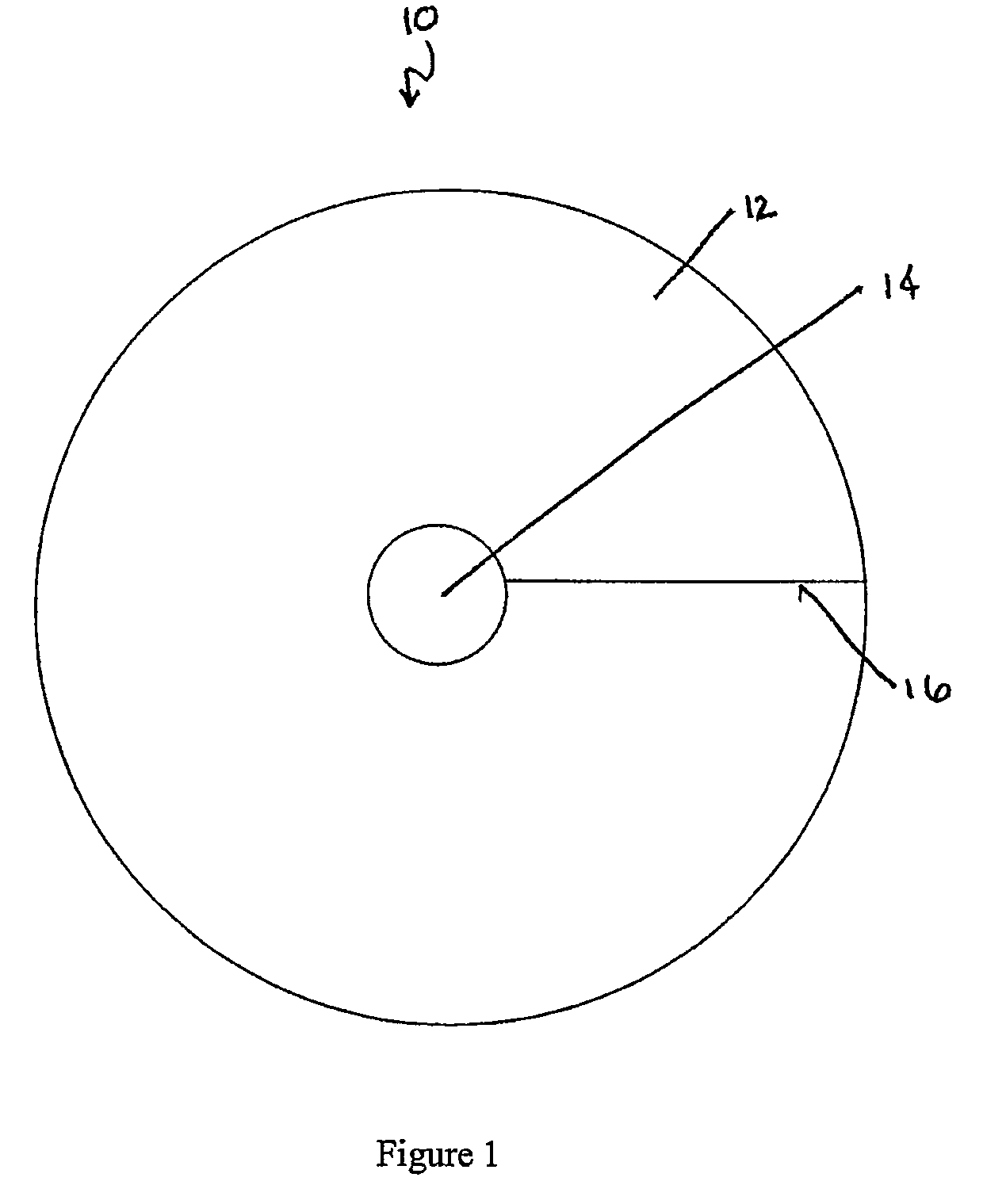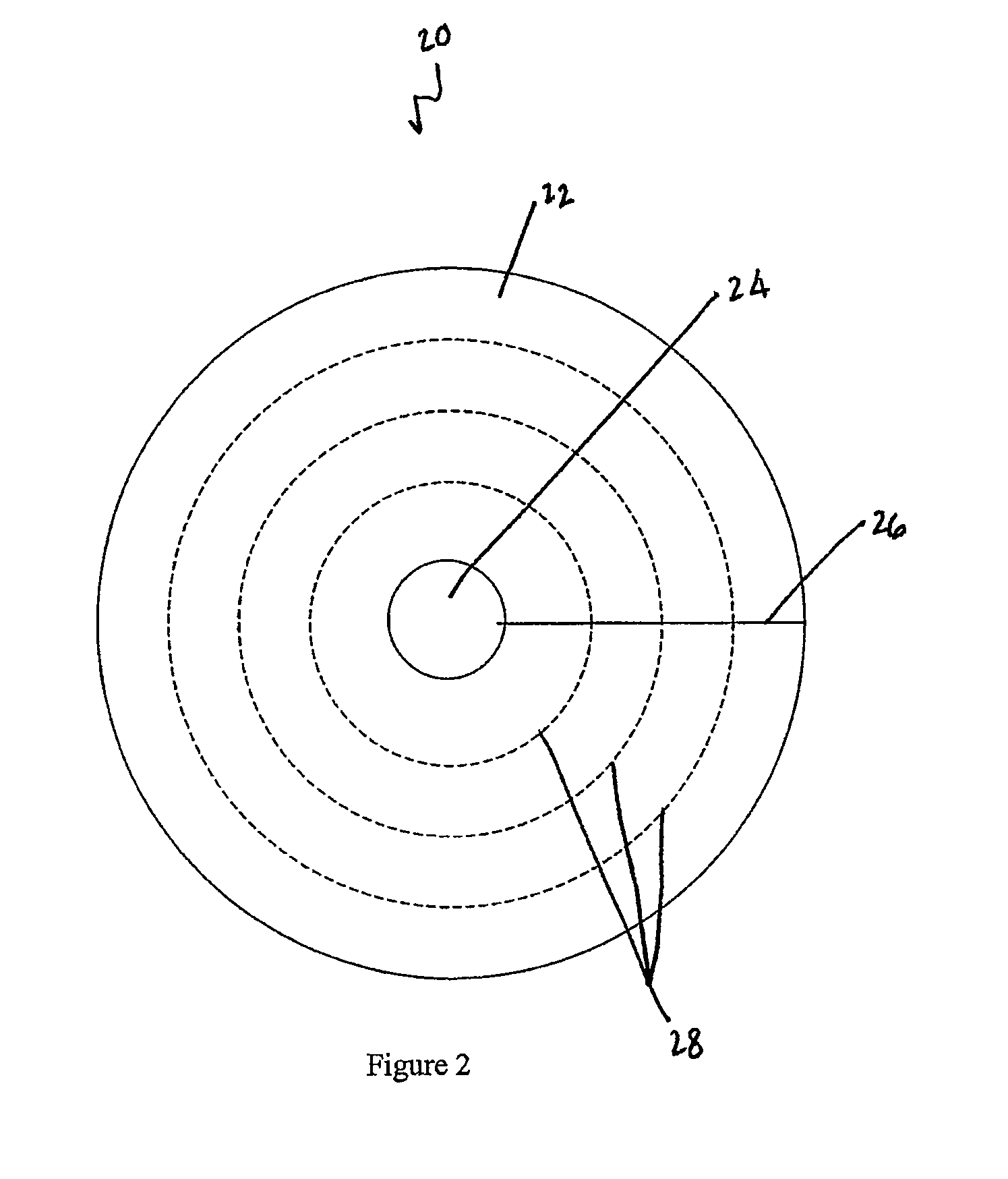Joint revision implant
a backing implant and joint technology, applied in the field of joint revision implants, can solve the problems of reducing the ability to work, voids may remain between the back surface of the implant and the pelvis, and loss of bone stock, so as to encourage bone apposition and promote biological attachment to the implan
- Summary
- Abstract
- Description
- Claims
- Application Information
AI Technical Summary
Benefits of technology
Problems solved by technology
Method used
Image
Examples
first embodiment
[0043]In a first embodiment, shown in FIG. 1, the backing implant 10 comprises a generally circular sheet 12 having a hole 14. The size, shape, and placement of the hole may be varied. For example, the hole may be centered or may be eccentric, may be circular or may be ovoid, etc. The size, shape, and placement of the hole may be determined based on, for example, concavity of the joint surface. In some embodiments, the hole facilitates folding or shaping the backing implant into a cone, described below. In these embodiments, the hole is sized for such use, generally reducing material that may need to be trimmed at the point of the cone and reducing the likelihood of the backing implant wrinkling during folding. In the figures, the generally circular sheet 12 and the center hole 14 are depicted as being round. It is to be understood, however, that, for the embodiment of FIG. 1 as well as all other embodiments described herein, any suitable geometry may be used for the sheet 12, the h...
second embodiment
[0044]In a second embodiment, shown in FIG. 2, the backing implant 20 comprises a generally circular sheet 22 having a hole 24 and a slit 26 extending from the hole to the outer edge, as in the embodiment of FIG. 1. The slit 26 may be perforated or may be cut through. The backing implant 20 of FIG. 2 further includes a series of generally concentric perforations 28. The surgeon may select one of the generally concentric perforations 28 corresponding to a desired outer diameter of the generally circular sheet 22. The surgeon then may tear or cut along the generally concentric perforation 28, removing material between the generally concentric perforation 28 and the outer edge, thereby forming an implant of desired size. As with the embodiment of FIG. 1, the surgeon may then fold the sheet 22 into a cone shape. Further, the overlapping edges may be cut and removed. While the generally concentric perforations 28 are depicted as being round, it is to be understood that any desired geomet...
PUM
| Property | Measurement | Unit |
|---|---|---|
| inner diameter | aaaaa | aaaaa |
| inner diameter | aaaaa | aaaaa |
| outer diameters | aaaaa | aaaaa |
Abstract
Description
Claims
Application Information
 Login to View More
Login to View More - R&D
- Intellectual Property
- Life Sciences
- Materials
- Tech Scout
- Unparalleled Data Quality
- Higher Quality Content
- 60% Fewer Hallucinations
Browse by: Latest US Patents, China's latest patents, Technical Efficacy Thesaurus, Application Domain, Technology Topic, Popular Technical Reports.
© 2025 PatSnap. All rights reserved.Legal|Privacy policy|Modern Slavery Act Transparency Statement|Sitemap|About US| Contact US: help@patsnap.com



